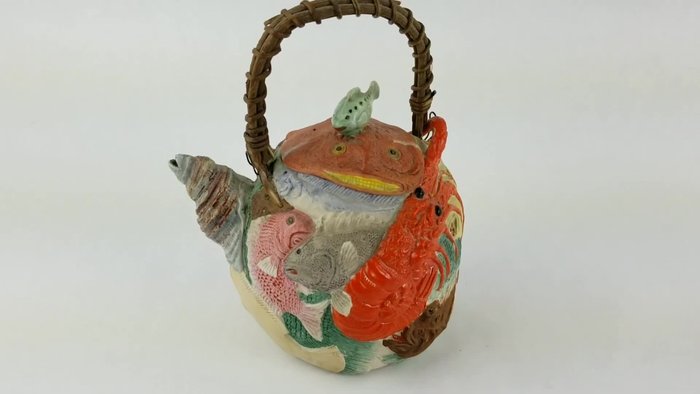Banko pottery, also known as Benko ware, is a captivating form of Japanese pottery renowned for its exquisite hand-painted designs and vibrant colors. Originating in the early 1900s, this art form showcases the exceptional skill and dedication of Japanese artisans. Each piece is a unique expression of artistry, often featuring intricate depictions of aquatic life, such as fish and lobsters, rendered with remarkable detail. The combination of unique forms and meticulously crafted designs makes Banko ware truly captivating.The rarity of many Banko pieces contributes significantly to their high value and collectability. These are not simply decorative objects; they represent a significant piece of Japanese artistic heritage, showcasing the masterful craftsmanship that defines this art form. Collectors prize Banko pottery for its unique artistic style, historical significance, and the exceptional skill reflected in each piece. This article delves into the history, characteristics, and enduring appeal of this highly sought-after pottery.
Pros And Cons
- Rare piece
- Made in Japan (early 1900s)
- Colorful hand-painted fish design
- High attention to detail
- Unique design
- Collectible
Read more: 9 Exquisite Japanese Ceramic Coffee Cups
Origins and History
Banko ware, also known as Benko pottery, is a type of Japanese pottery with a rich history. It originated in the early 1900s, emerging from the workshops of skilled artisans. This pottery style is renowned for its unique characteristics and artistry, making it a sought-after collectible item among enthusiasts.

The creation of Banko pottery is closely linked to the skill and craftsmanship of Japanese potters. The pieces often feature intricate designs and vibrant colors, showcasing the dedication to detail that defines this art form. Its enduring popularity speaks to the artistry and cultural significance of Banko ware.

Distinctive Characteristics
Banko pottery is characterized by its distinctive hand-painted designs, often featuring aquatic life such as fish, lobsters, and other marine creatures. The vibrant colors and intricate details are hallmarks of this style. Each piece is unique, reflecting the artist's skill and creativity.

The artistry extends beyond simply painting; the forms themselves are often unique and expressive. The attention to detail, such as scales on fish or textures on shells, is remarkable. This combination of form and design is what makes Banko ware so captivating.

Rarity and Collectibility
Many Banko pieces are quite rare, making them highly sought after by collectors. The rarity of specific designs and patterns influences their value, leading to a fluctuating market. These pieces are often considered investments due to their limited availability and increasing value over time.

The unique artistic style and history of Banko pottery contribute significantly to its collectability. The intricate detail and masterful craftsmanship set it apart, making each piece a treasure for any serious collector of Japanese pottery.

Conclusion
Banko pottery represents a significant piece of Japanese artistic heritage. Its unique blend of hand-painted designs, intricate details, and rarity makes it a highly desirable collectible item. Whether it's the vibrant colors, lifelike depictions of marine life, or the sheer artistry, Banko pottery offers a captivating glimpse into the skilled craftsmanship of Japanese artisans.

The video showcases a rare and beautiful example of Banko ware, highlighting the attention to detail and the unique character of this style of pottery. For collectors and enthusiasts of Japanese art, Banko pottery offers a truly special and valuable addition to any collection.

